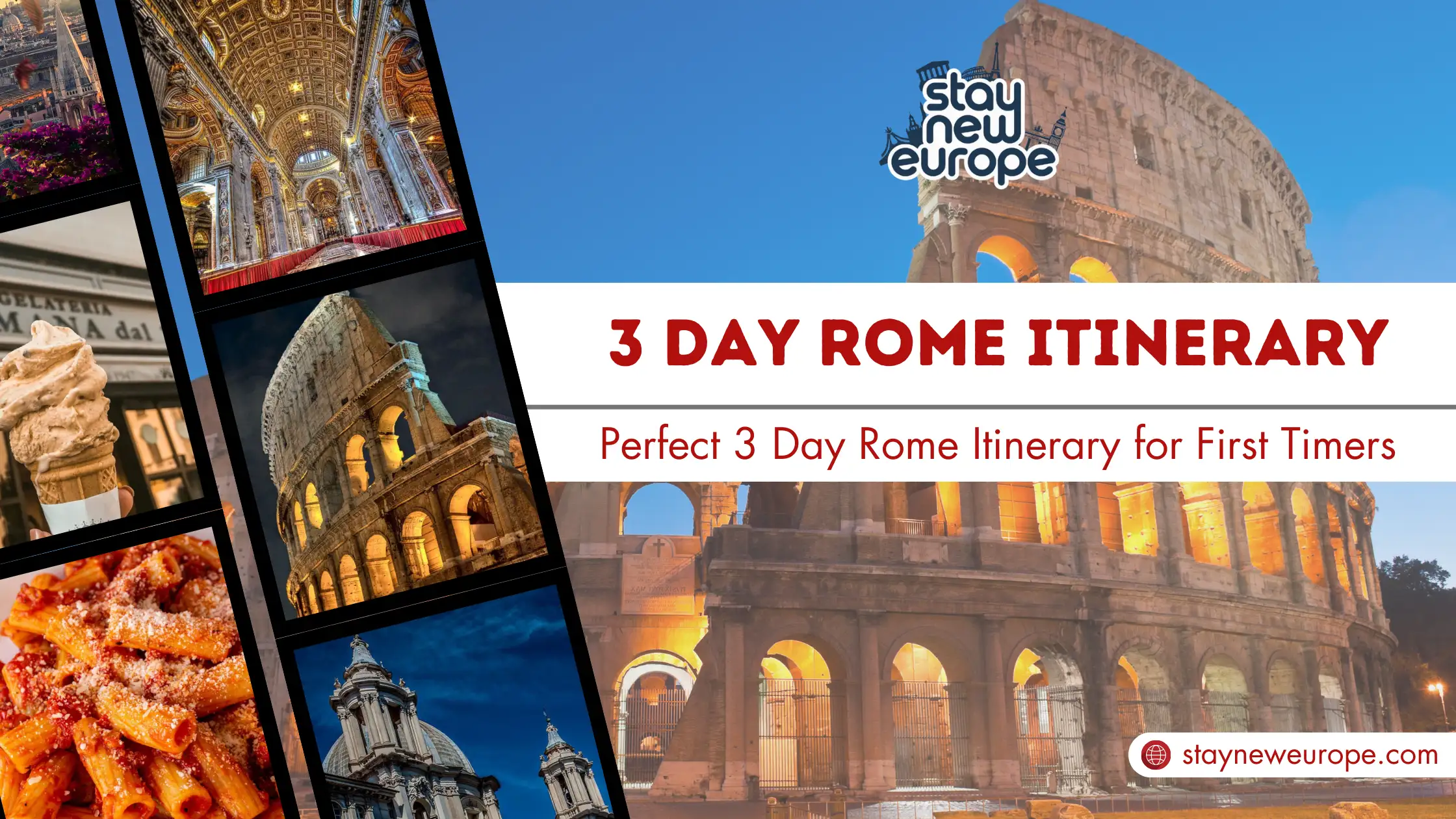Rome, the Eternal City, is a treasure trove of history and culture. Visiting for the first time can be overwhelming due to its endless attractions.
Planning the perfect itinerary is essential to make the most of your stay. Exploring Rome in three days offers a glimpse into its rich past and vibrant present. From ancient ruins to delicious food, every corner tells a story. With centuries of history and art, it promises unforgettable experiences.
Discover iconic landmarks like the Colosseum, Vatican City, and the Pantheon. Taste authentic Italian cuisine and stroll through charming streets. This itinerary will guide you through Rome’s highlights efficiently. Each day is planned to balance sightseeing with relaxation. Dive into Rome’s unique charm and create lasting memories. Ready to explore? Let’s start planning your Roman adventure!
Day 1: Ancient Rome
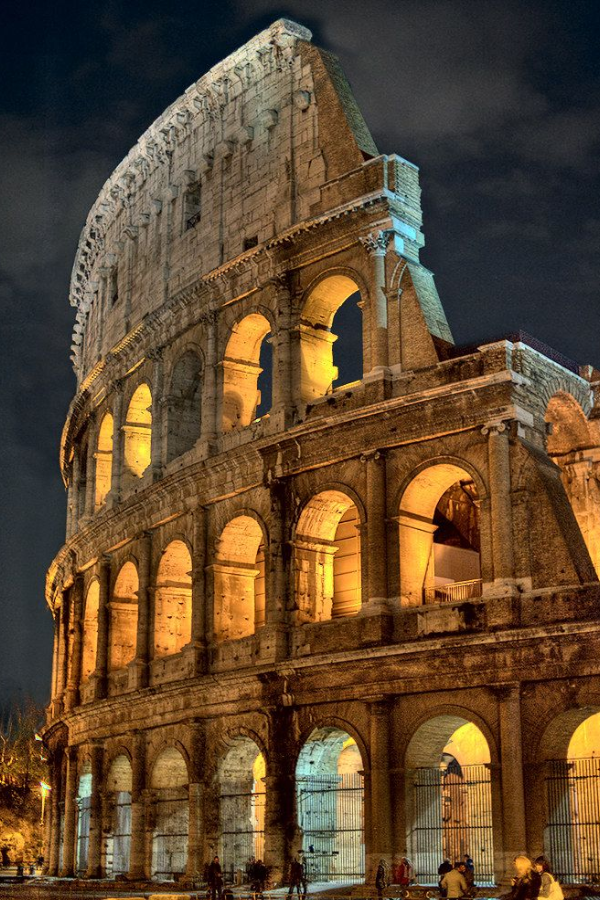
Rome, the Eternal City, is a treasure trove of history, culture, and art. If you’re visiting for the first time, a well-planned itinerary can make your trip unforgettable. Day 1 is dedicated to Ancient Rome. This day will take you through some of the most iconic landmarks of Roman history, giving you a glimpse into the grandeur of the past.
Colosseum Visit
Start your day at the Colosseum, one of the most famous landmarks in the world. This ancient amphitheater could hold up to 80,000 spectators. It hosted gladiatorial contests, public spectacles, and dramas. When you visit the Colosseum, consider getting a skip-the-line ticket to save time.
Inside the Colosseum, you can explore:
- The arena floor where gladiators fought
- The underground chambers where animals and slaves were kept
- The upper levels for a panoramic view of the arena
Remember to wear comfortable shoes. The ground is uneven and there are many stairs. Also, bring water, especially during summer. A guided tour can offer deeper insights into the history and architecture of this magnificent structure.
Roman Forum Exploration
Next, walk over to the Roman Forum, just a short distance from the Colosseum. This area was the heart of ancient Rome, where commerce, politics, and social activities took place. The Forum is a sprawling site with ruins of important government buildings, temples, and monuments.
Highlights of the Roman Forum include:
| Site | Significance |
|---|---|
| Temple of Saturn | One of the oldest temples, dedicated to Saturn |
| Arch of Titus | Celebrates the victory of Titus |
| House of the Vestals | Home of the Vestal Virgins |
Take your time to explore. Each ruin tells a story of Rome’s rich history. Informational plaques throughout the site provide context and details. A visit to the Roman Forum is like stepping back in time.
Palatine Hill Stroll
Finish your day at Palatine Hill, one of the most ancient parts of the city. This is where, according to legend, Romulus founded Rome. The hill offers stunning views of the Roman Forum and the Circus Maximus.
While strolling through Palatine Hill, you will see:
- The Imperial Palaces, home to Roman emperors
- The Farnese Gardens, beautifully landscaped gardens from the Renaissance
- The Palatine Museum, showcasing artifacts from the hill
The serene environment makes Palatine Hill a perfect place to relax after a day of exploration. Benches are scattered throughout the area, providing spots to rest and take in the view. Don’t forget your camera. The panoramic views are breathtaking.
By the end of Day 1, you will have experienced the grandeur and history of Ancient Rome. Each site offers a unique glimpse into the past, making your first day in Rome truly memorable.
Day 2: Vatican City

Day 2 of your Rome adventure takes you to the awe-inspiring Vatican City. This tiny, independent state is packed with history, art, and spirituality. Spend your day exploring some of the world’s most famous religious and cultural sites. You’ll experience the grandeur of St. Peter’s Basilica, marvel at the treasures in the Vatican Museums, and be awestruck by the Sistine Chapel. Prepare for a day filled with wonder and discovery!
St. Peter’s Basilica
St. Peter’s Basilica is a masterpiece of Renaissance architecture. It’s one of the largest churches in the world and a must-see in Vatican City. As you approach, take a moment to admire the magnificent St. Peter’s Square, designed by Bernini. Inside the basilica, you will find stunning art and architecture.
- The Dome: Climb up for a breathtaking view of Rome. It’s worth the effort!
- The Pietà: Michelangelo’s famous sculpture is located in a side chapel.
- The Baldachin: A large bronze canopy by Bernini that stands over the main altar.
Plan your visit early to avoid the crowds. The basilica opens at 7:00 AM. Dress modestly; shoulders and knees must be covered. Entry is free, but there may be a line for security checks. Consider using a guided tour to learn more about its rich history.
Vatican Museums Tour
The Vatican Museums house one of the largest art collections in the world. With over 70,000 works, there’s plenty to explore. Start your tour in the early morning for a more relaxed visit. Here are some must-see highlights:
- The Raphael Rooms: Home to stunning frescoes by Raphael.
- The Gallery of Maps: A long corridor with beautifully detailed maps of Italy.
- The Egyptian Museum: Fascinating artifacts from ancient Egypt.
Tickets are essential and should be booked in advance. The museums can get busy, especially during peak tourist season. Consider a guided tour for a more insightful experience. Note that the museums are closed on Sundays, except the last Sunday of each month, when entry is free.
Sistine Chapel Experience
The Sistine Chapel is the Vatican’s crown jewel. Known for its breathtaking ceiling painted by Michelangelo, it’s a sight you’ll never forget. The chapel is located within the Vatican Museums, so plan your visit accordingly.
Highlights of the Sistine Chapel:
| Feature | Description |
|---|---|
| The Ceiling | Michelangelo’s masterpiece depicting scenes from Genesis. |
| The Last Judgment | A dramatic fresco on the altar wall, also by Michelangelo. |
| The Side Walls | Frescoes by various Renaissance artists, including Botticelli. |
Photography is not allowed inside. Respect the quiet atmosphere, as this is a place of worship. The Sistine Chapel can be crowded, so try to visit during off-peak hours for a more serene experience.
Day 3: Rome’s Charm
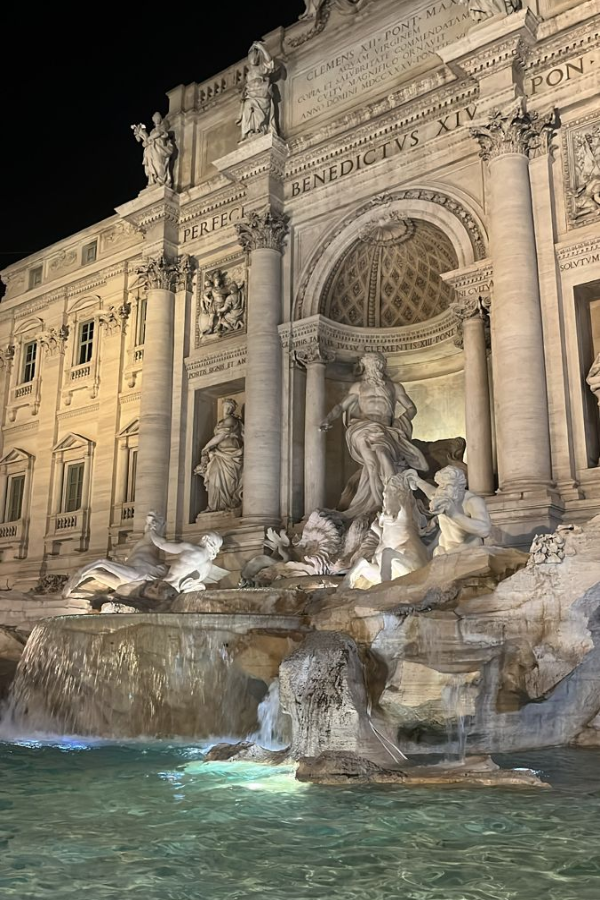
Rome is a city that never ceases to amaze. By the third day of your Roman adventure, you’ll be ready to soak in the city’s undeniable charm. Day 3 offers a chance to explore some of Rome’s most iconic spots, each brimming with history and beauty. From the enchanting Trevi Fountain to the lively Piazza Navona, this day will leave you spellbound. Let’s dive into Rome’s charm!
Trevi Fountain
The Trevi Fountain is not just a masterpiece of Baroque art; it’s a symbol of Rome. The fountain, completed in 1762, stands at the junction of three roads, marking the terminal of the Aqua Virgo. This ancient aqueduct has supplied water to Rome since 19 BC. Tossing a coin into the fountain is a must-do. Legend says it ensures your return to Rome.
Here are some things to know about Trevi Fountain:
- Location: Piazza di Trevi, in the Quirinale district.
- Best Time to Visit: Early morning or late evening to avoid crowds.
- Fun Fact: An estimated 3,000 Euros are thrown into the fountain daily.
Nearby, you’ll find cozy cafes and gelato shops. Take a moment to savor a sweet treat as you admire the fountain’s intricate sculptures. Capture the beauty of the moment with a photograph. Remember, the fountain is even more stunning when lit up at night.
Spanish Steps
The Spanish Steps, or Scalinata di Trinità dei Monti, are a grand staircase of 135 steps. They connect the Piazza di Spagna at the base to the Trinità dei Monti church at the top. Built in the early 18th century, these steps have become a popular gathering spot for both locals and tourists.
As you climb the steps, take in the view of the bustling piazza below. The steps are a perfect place to pause and people-watch. Nearby attractions include:
- Keats-Shelley Memorial House: A museum dedicated to the Romantic poets.
- Babington’s Tea Room: Established in 1893, this offers an English tea experience.
Don’t miss the Barcaccia Fountain at the base, designed by Pietro Bernini. The Spanish Steps are also a short walk from the Via Condotti. This street is famous for its luxury shopping.
Piazza Navona
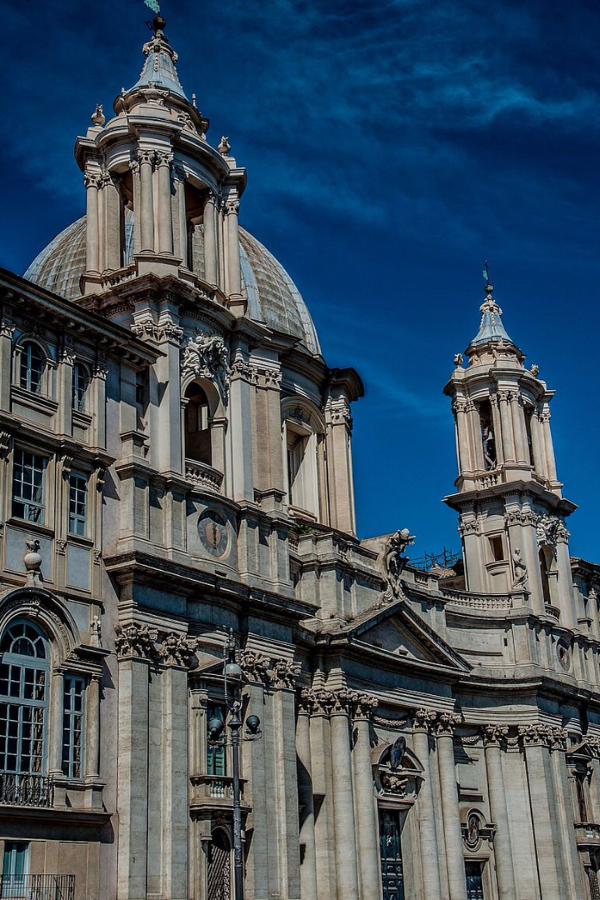
Piazza Navona is a lively square, known for its beautiful fountains and vibrant atmosphere. Originally a stadium for athletic contests, it now hosts artists, musicians, and cafes. The square is a perfect place to relax and soak in the local culture.
The centerpiece of Piazza Navona is the Fountain of the Four Rivers, designed by Gian Lorenzo Bernini. Each river represents a continent: the Nile, Ganges, Danube, and Rio de la Plata. The square also features:
- Church of Sant’Agnese in Agone: A stunning example of Baroque architecture.
- Moor Fountain and Neptune Fountain: Other beautiful fountains worth seeing.
Enjoy a leisurely stroll around the piazza. Consider dining al fresco at one of the many restaurants. The lively atmosphere and beautiful surroundings make Piazza Navona a delightful end to your Roman itinerary.
Culinary Delights

Rome is not only a city of ancient ruins and art but also a haven for food lovers. Your 3-day itinerary in Rome should include a culinary journey through the city’s rich gastronomic history. From traditional Roman dishes to the best gelato spots and local wine recommendations, every meal in Rome tells a story. This guide will help you savor the best flavors Rome has to offer.
Traditional Roman Dishes
Exploring Rome’s culinary delights starts with its traditional dishes. These recipes have been passed down through generations and are a must-try for any first-time visitor.
- Carbonara: A pasta dish made with eggs, cheese (Pecorino Romano), pancetta, and pepper. It’s creamy, rich, and utterly delicious.
- Cacio e Pepe: A simple yet flavorful pasta dish made with Pecorino Romano cheese and black pepper. It’s a testament to the beauty of simplicity.
- Amatriciana: A spicy tomato-based pasta sauce with guanciale (cured pork cheek) and Pecorino Romano. It’s hearty and satisfying.
- Saltimbocca: Veal topped with prosciutto and sage, cooked in white wine and butter. This dish literally means “jump in your mouth” for a reason.
For a more immersive experience, visit local trattorias and osterias. These traditional restaurants offer authentic dishes and a cozy atmosphere. Some recommended places include:
| Restaurant | Location |
|---|---|
| Trattoria Da Enzo al 29 | Trastevere |
| Roscioli | Campo de’ Fiori |
| Osteria del Pegno | Near Piazza Navona |
Best Gelato Spots
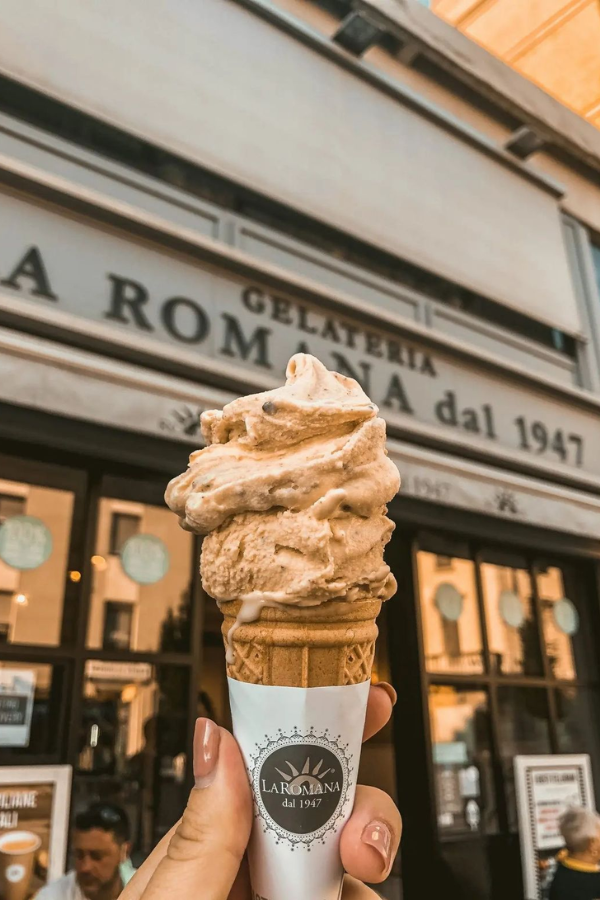
No trip to Rome is complete without indulging in gelato. This creamy delight is available on nearly every corner, but some spots stand out for their quality and flavors.
- Gelateria La Romana: Known for its rich flavors and generous servings. Try the pistachio or stracciatella.
- Giolitti: One of the oldest gelato shops in Rome. It offers a wide range of traditional and innovative flavors.
- Fatamorgana: Specializes in organic gelato with unique flavors like basil, honey, and walnut.
When you visit these gelaterias, look for gelato that is stored in covered containers. This indicates freshness and quality. Avoid gelato piled high in bright colors, as this often means artificial flavors and colors.
For the best experience, try a few different flavors. Mix fruity options like lemon or raspberry with creamy ones like hazelnut or chocolate. This balance will give you a true taste of Italian gelato.
Local Wine Recommendations
Rome’s culinary delights are complemented by its excellent wines. The Lazio region, where Rome is located, produces some fantastic wines that pair perfectly with traditional dishes.
- Frascati: A white wine known for its crisp and refreshing taste. It pairs well with pasta and seafood.
- Est! Est!! Est!!! di Montefiascone: A slightly sweet white wine with a fascinating history. Ideal with lighter dishes and appetizers.
- Cesanese: A red wine with deep flavors, perfect with hearty meat dishes like Saltimbocca.
To enjoy the best local wines, visit Rome’s enotecas (wine bars). These establishments offer a wide selection of wines by the glass or bottle. Some recommended enotecas include:
| Enoteca | Location |
|---|---|
| Il Goccetto | Via dei Banchi Vecchi |
| Enoteca Corsi | Via del Gesù |
| Trimani | Via Goito |
Don’t hesitate to ask the sommelier for recommendations. They can suggest wines that best complement your meal and enhance your culinary experience in Rome.
Hidden Gems
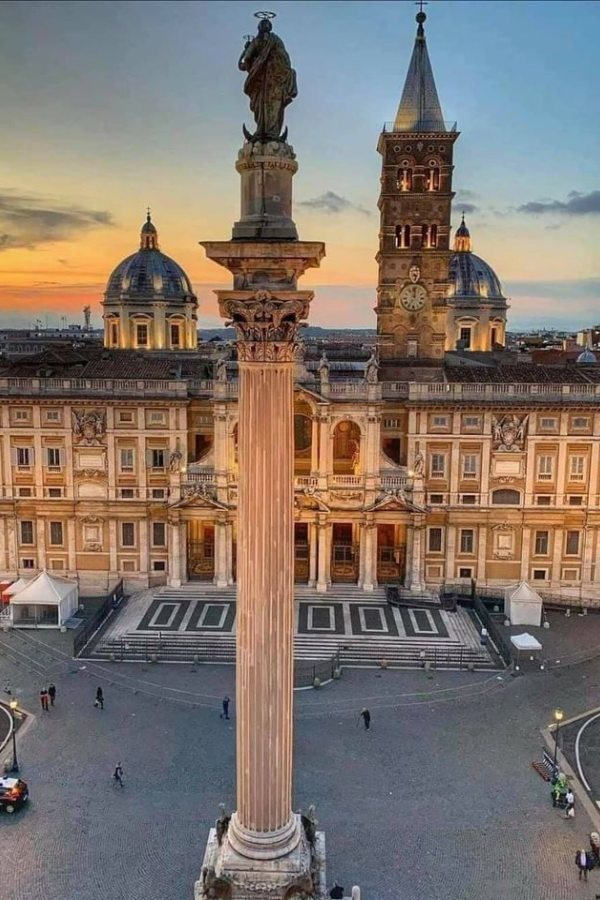
Rome is a city that dazzles with its ancient history and iconic landmarks. But beyond the Colosseum and the Vatican, it hides many lesser-known treasures. First-time visitors can uncover these hidden gems to experience the authentic charm of Rome. This 3-day itinerary will guide you through quaint neighborhoods, artistic masterpieces, and historical paths. Prepare to delve into the heart of Rome’s secret wonders.
Trastevere Exploration
Trastevere is a delightful neighborhood where the spirit of Rome thrives in its narrow cobblestone streets. This area offers a glimpse into local life, away from the bustling tourist spots. Spend a morning wandering through its charming alleys, where you’ll discover colorful buildings adorned with ivy. Stop by the Santa Maria in Trastevere, one of the oldest churches in Rome, known for its stunning mosaics.
- Piazza di Santa Maria: A lively square perfect for people-watching.
- Tiber Island: A short walk to this island offers peaceful views of the Tiber River.
- Antico Caffè del Moro: Enjoy a traditional Italian espresso here.
As the sun sets, Trastevere transforms into a vibrant spot for dining. Try a local trattoria like Osteria Rugantino for authentic Roman cuisine. Don’t miss the opportunity to taste cacio e pepe, a classic pasta dish. This neighborhood’s charm lies in its ability to blend history with modern Roman life.
Borghese Gallery Visit
The Borghese Gallery is a must-visit for art lovers seeking an intimate experience with masterpieces. Nestled within the Villa Borghese gardens, this gallery houses works by famed artists like Caravaggio, Raphael, and Bernini. The gallery’s collection spans from classical sculptures to Renaissance paintings, making it a treasure trove of artistic heritage.
Here’s a quick guide to what you can expect:
| Highlights | Description |
|---|---|
| Bernini’s Sculptures | Marvel at the lifelike detail in The Rape of Proserpina and Apollo and Daphne. |
| Caravaggio’s Paintings | Experience the dramatic lighting and emotional intensity in Boy with a Basket of Fruit. |
Book your tickets in advance as entry is limited. After exploring the gallery, stroll through the sprawling gardens. It’s an ideal spot for a picnic or a leisurely walk. The Borghese Gallery offers a quieter, yet equally enriching experience compared to larger museums.
Appian Way Adventure
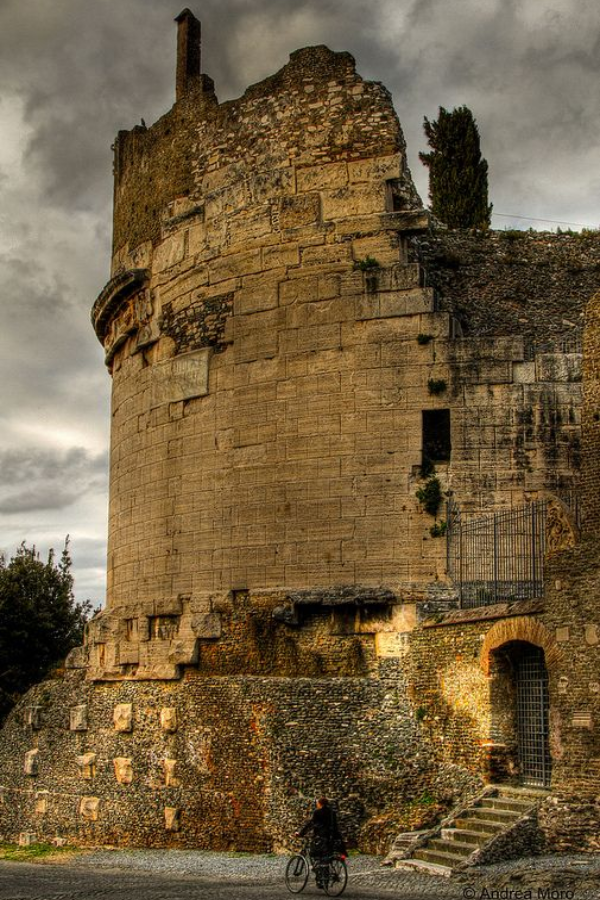
The Appian Way, or Via Appia Antica, is an ancient road that beckons history enthusiasts. This path, once a crucial road for the Roman Empire, stretches through the countryside, offering a serene escape from the city. Walk or cycle along this historical route to uncover fascinating sites.
Key attractions along the way include:
- Catacombs of San Callisto: Explore early Christian burial sites.
- Tomb of Cecilia Metella: A striking Roman mausoleum.
- Villa dei Quintili: Ruins of a grand ancient villa.
The Appian Way is not just a historical journey. It’s a chance to connect with nature and reflect on Rome’s expansive history. Pack a light lunch and enjoy a picnic under the Italian sun. This adventure offers a unique perspective on Rome, blending antiquity with tranquility.
Transportation Tips
Exploring Rome in just three days can be thrilling yet challenging. The city’s vibrant culture and history are best experienced when you know how to get around efficiently. Transportation is key to maximizing your itinerary without feeling rushed. Below are essential tips to navigate Rome’s streets and make the most of your visit.
Public Transport Guide
Rome boasts an extensive public transportation system, making it easy for visitors to explore. The main modes of transport include buses, trams, and the metro. The ATAC manages these services, ensuring seamless connections across the city.
Here are some quick tips:
- Metro: Rome’s metro system has three lines: A, B, and C. Lines A and B are most useful for tourists.
- Buses: Buses cover more ground than the metro, reaching areas like Trastevere and Appia Antica.
- Trams: Useful for short distances and scenic routes, especially in less crowded areas.
Tickets are valid for all modes of transport and are quite affordable. Here’s a brief table for ticket pricing:
| Ticket Type | Price | Validity |
|---|---|---|
| Single Ride | €1.50 | 100 minutes |
| Day Pass | €6.00 | 24 hours |
| Weekly Pass | €24.00 | 7 days |
Walking Routes
Walking is one of the most rewarding ways to explore Rome. Many of the city’s iconic attractions are within walking distance of each other. This not only saves time but offers a more intimate experience of the city’s charm.
Consider these popular walking routes:
- Colosseum to Roman Forum: Start at the Colosseum, then head to the Roman Forum. Experience ancient Rome’s grandeur.
- Trevi Fountain to Spanish Steps: Wander from the enchanting Trevi Fountain to the iconic Spanish Steps. Capture the essence of Rome’s lively atmosphere.
- Vatican City Walk: Explore St. Peter’s Basilica and the Vatican Museums. A spiritual and historical journey.
While walking, wear comfortable shoes and carry a map or use a GPS app. This ensures you stay on track and enjoy your stroll without stress.
Taxi And Ride-sharing Options
Taxis and ride-sharing services are convenient for reaching destinations quickly, especially when public transport isn’t suitable. Rome’s taxis are usually white and have a “Taxi” sign on top. They operate on a meter system, ensuring transparent fares.
Here’s what you should know:
- Taxi Stands: Locate official taxi stands near major attractions and train stations for easy access.
- Ride-sharing Apps: Apps like Uber and Free Now provide a modern alternative with competitive pricing.
- Booking: Use apps to book in advance and track your ride for added convenience.
For a comfortable ride, ensure your destination is clear to the driver. Taxis are ideal for late-night travel or when carrying heavy luggage.
Cultural Insights
Rome, a city that breathes history, art, and culture, offers an unparalleled experience. For first-timers, understanding the cultural nuances can enrich your journey. Knowing the local etiquette, useful phrases, and cultural events can make your Rome itinerary more memorable. Dive into these cultural insights to truly connect with the heart of the Eternal City.
Local Etiquette
Respecting local customs is key to a pleasant visit in Rome. Italians value politeness and courtesy. Here’s what you need to know:
- Dress Modestly: When visiting churches, cover your shoulders and knees.
- Greetings Matter: A simple “Buongiorno” (Good day) or “Buonasera” (Good evening) goes a long way.
- Mind the Queue: Italians appreciate order, so respect the line.
- Dining Etiquette: Don’t rush meals. Meals are a time to relax and socialize.
- Tipping: Not obligatory, but leaving small change is appreciated for good service.
Understanding these aspects helps in blending with the local culture. It shows respect and earns you warm smiles from locals.
Useful Phrases
Learning a few Italian phrases can enhance your interaction with locals. Here are some to get you started:
| English | Italian |
|---|---|
| Hello | Ciao |
| Please | Per favore |
| Thank you | Grazie |
| Excuse me | Mi scusi |
| How much? | Quanto costa? |
Using these phrases can create a friendly atmosphere. It shows that you’re making an effort, which locals appreciate. These simple words can open doors to meaningful interactions.
Cultural Events Calendar
Rome hosts a variety of cultural events throughout the year. Each event offers a unique glimpse into the city’s vibrant culture.
- January – New Year’s Day Parade: A lively parade with music and performances.
- April – Rome’s Birthday: Celebrated with fireworks and historical reenactments.
- June – Festa della Repubblica: Military parades and flyovers celebrate Italy’s Republic Day.
- September – Sagra dell’Uva: A grape festival featuring wine tastings and local food.
- December – Christmas Markets: Experience festive stalls and traditional treats.
Attending these events can offer a deeper connection to Rome’s traditions. They provide an opportunity to experience local life beyond the tourist spots. Check the dates and plan accordingly to include these in your itinerary.
Packing Essentials
Planning a trip to Rome can be exhilarating yet daunting, especially for first-timers. Your journey will be filled with awe-inspiring sights, delicious food, and rich history. To make the most of your adventure, packing smartly is essential. Knowing what to bring ensures you are prepared for the vibrant city life and ancient ruins. Let’s dive into the packing essentials, offering tips on clothing, gear, and necessary travel documents. This guide will help you navigate the Eternal City with ease.
Clothing Recommendations
Choosing the right clothing for Rome is crucial. The city is a blend of ancient history and modern flair, and your wardrobe should reflect that. Consider the season:
- Summer: Lightweight fabrics like cotton and linen are perfect. Opt for breathable attire to beat the heat.
- Spring/Fall: Layering is key. Pack a mix of short-sleeve shirts and light sweaters.
- Winter: Warm coats and scarves are a must. The weather can be chilly, so thicker layers are advisable.
Comfortable shoes are non-negotiable. Rome’s cobblestone streets and expansive sites demand sturdy footwear. Stylish sneakers or cushioned sandals are ideal for long walks.
Many religious sites require modest attire. Keep a scarf or shawl handy to cover shoulders when visiting churches.
| Item | Recommended Quantity |
|---|---|
| T-shirts | 3-5 |
| Pants/Shorts | 2-3 |
| Comfortable Shoes | 1-2 pairs |
Must-have Gear
Beyond clothing, certain gear can enhance your Roman holiday. Here’s a list of essentials:
- Portable Charger: Keep your devices powered while capturing unforgettable moments.
- Crossbody Bag: Convenient for carrying daily essentials and keeping belongings secure.
- Travel Umbrella: Weather can be unpredictable. A compact umbrella is a smart addition.
- Reusable Water Bottle: Stay hydrated and eco-friendly. Rome has numerous fountains offering fresh water.
For photographers, a lightweight camera is perfect for snapping pictures of iconic landmarks like the Colosseum and St. Peter’s Basilica.
If you plan to explore off-the-beaten-path areas, a reliable map app or GPS device will guide you.
Earplugs can be a lifesaver in bustling areas. They ensure a peaceful night’s rest, especially if your accommodation is near the city center.
Travel Documents Checklist
Having the right documents ready is vital for a smooth trip. Here’s a checklist to ensure you have everything:
- Passport: Ensure it’s valid for at least six months from your arrival date.
- Visa: Check if you need a visa for entry. Many travelers from the U.S. and EU don’t require one.
- Travel Insurance: Protect yourself from unexpected events like medical emergencies or trip cancellations.
- Flight Tickets: Keep both digital and printed copies for easy access.
- Accommodation Confirmation: Have proof of your bookings, including addresses and contact numbers.
Consider carrying a photocopy of your passport and visa. It’s handy in case of loss or theft.
A local SIM card or international roaming plan ensures you stay connected. Communication is key during travel.
Lastly, a small notebook with important contacts and emergency numbers can be invaluable in unforeseen situations.
Frequently Asked Questions
Is 3 Days Long Enough In Rome?
Yes, 3 days is enough to explore Rome’s main attractions. Visit iconic sites like the Colosseum, Vatican City, and Trevi Fountain. Enjoy local cuisine and stroll through charming neighborhoods. Plan well to maximize your time and experience the city’s rich history and culture.
What Is The Number 1 Must See In Rome?
The Colosseum is the number one must-see in Rome. This iconic ancient amphitheater symbolizes Rome’s historical grandeur and architectural brilliance. Visitors can explore its fascinating history and imagine the gladiatorial contests that once took place there. It’s an essential stop for anyone visiting the Eternal City.
How Many Days Do You Need In Rome For The First Time?
Three to four days are ideal for a first-time visit to Rome. This allows you to explore major attractions comfortably.
Which Area Is Best For First Time In Rome?
Stay in the historic center of Rome, near landmarks like the Colosseum and Trevi Fountain. This area offers easy access to attractions, dining, and shopping. Popular neighborhoods include Trastevere and Monti, known for their charm and vibrant atmosphere. Ideal for first-time visitors seeking convenience and memorable experiences.
Conclusion
Exploring Rome in three days is exciting and memorable. Each attraction offers unique experiences. From ancient ruins to vibrant streets, Rome has it all. Enjoy the rich history and delicious cuisine. Capture memories with stunning photos. This itinerary ensures you see the best of Rome.
Travel at your own pace. Savor every moment. Embrace the culture and charm. A trip to Rome is always worth it. Plan your visit and enjoy this timeless city.

